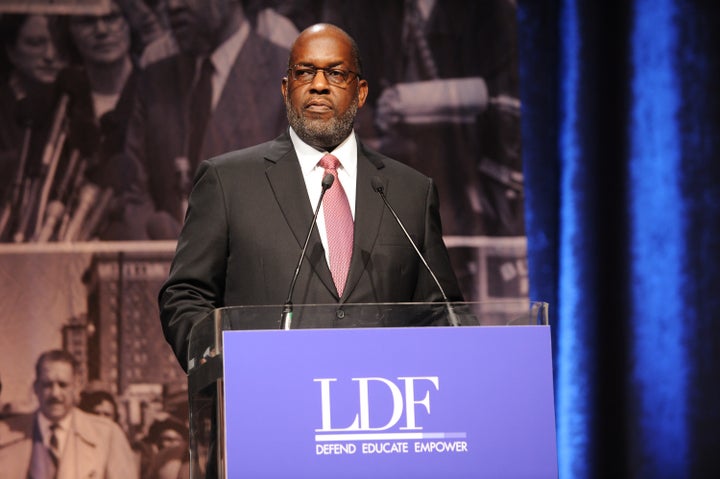
Silicon Valley stalwart Intel just embarked on a mission its own CEO is calling scary: taking a deep, methodical look at how it pays under-represented minorities -- including Hispanics, African-Americans and Native Americans -- to ensure they’re compensated fairly in relation to white and Asian-American employees.
The audit, across about 50,000 employees in the U.S. at all levels, is just now getting underway. Chief executive Brian Krzanich told The Huffington Post last month he wasn’t exactly sure what they’d find.
“We’re scared to death,” Krzanich said, speaking at an event supporting equality in Beverly Hills, California. Still, he emphasized he was committed to fixing whatever disparities the company’s internal data team turns up. “You get the data and do something,” he said. Intel will reveal the results at the end of the year.
The gender pay gap is the big story these days. Women currently make 79 percent on average of what men make. Hillary Clinton, Bernie Sanders and Barack Obama are among the many public figures speaking out about closing the gap. Some tech companies -- including Intel, but also Salesforce and Pinterest -- are doing pay audits to make sure women and men are paid equally for equal work.
Far less attention is going to the racial pay gap. And make no mistake, it needs our attention. While the gender pay gap has slowly narrowed over the past decade, the gulf between what whites and blacks make in the U.S. has actually grown. In 1979, black men made 78 cents for every dollar white men made, while women made around 68 cents to the male dollar on average. Today, black men make 70 cents on the dollar, according to Census data.
The pay gap between whites and Hispanics has not changed during those years either, Valerie Wilson, an economist at the Economic Policy Institute, told HuffPost. “The gaps are really persistent,” she said.
The pay gap between Native Americans and whites is less well studied, but we do know that the median household income of Native Americans and Alaskan Natives, $36,000, is well below median income for the nation on average, which is $52,000.
A toxic stew of factors helps create these disparities -- the decline of unions and wage stagnation for all workers certainly play a role, Wilson said. But if you look at the data and control for things like education, experience and occupation, the gap between black and white men narrows only slightly, she noted. The gap between whites and Hispanics narrows a bit more once you control for those factors.
Discrimination obviously plays a large role. Bias against African-Americans and other minorities makes it more difficult to get the same opportunities to land higher-paying jobs or promotions. It means that even if you get the job, you might make less money based on your skin color.
Wilson, who’s been studying the issue for the past 15 years, said she is currently working on a study to try to better understand the racial pay gap.
Getting a look inside the pay practices of companies would certainly help. While Wilson suspects there are pay differences within organizations, there isn't much data available. “I wish more companies would take that sort of initiative to address pay disparities within their organization,” she said.
Companies alone won't be able to eradicate the entire U.S. economy's pay gap -- but a single organization can at least work to get rid of its own internal biases.
“The CEO sets the tone for the company. Period,” Bernard Tyson, the African-American chief executive of the nonprofit healthcare company Kaiser Permanente, said recently at the equality event in Beverly Hills. It’s easy enough to see how your employees are paid, Tyson said. And once you know about the problem, you can fix it.
“I know what it feels like when you discover that you’re doing the same job as someone else who happens to be a white man," Tyson said. "It is a blow to your guts. It happened to me. I know what it tastes like. And on my watch no one will ever experience that.”

Though Intel has made diversity a priority over the past decade, it still isn’t where it wants to be. Only 3.5 percent of its workers are African-American, according to the company’s 2015 diversity report. Intel reckons that is below “market availability” of African-American talent of 4.5 percent. Compounding the issue: Black employees leave the company at higher rates than white and Asian employees, Danielle Brown, the company’s chief diversity officer, told HuffPost.
Intel is comparing the pay of under-represented minorities against both whites and Asian-Americans because it says it employs both groups in line with "market availability," meaning Intel employs a fair percentage of those demographics relative to the amount of talent in the market. Asian-Americans, on average, don't see the same kind of pay disparity that other minorities face in the U.S., Wilson said.
In February, Intel announced the results of its first-ever gender pay audit. The company found no gap between what men and women make.
“We almost fell out of our chairs,” Brown said of the company's reaction.
Still, they shouldn’t have been too surprised. Though Intel had never done a system-wide audit before, the company does carefully go over annual reviews, salary increases and promotions to check for gender and racial bias, Brown said.
“We’ve paid a lot of attention to this,” Brown said. “We wanted to show the industry that this is an important issue, and by sharing our data we hope it leads the way for others to share, too.”
